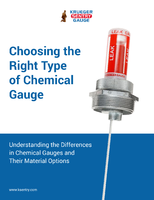EPA Administrator meets with Minister of MOEJ in Tokyo.
Share:
Press Release Summary:
Administrator of EPA, Gina McCarthy, and the Minister of Ministry of the Environment of Japan, Yoshio Mochizuki, met in Tokyo, Japan for high-level bilateral dialogue. At conclusion of dialogue, Administrator McCarthy and Minister Mochizuki announced a common view to enhance bilateral and regional environmental collaboration related to mercury, climate change, regional air quality, environmental education, decontamination, children’s environmental health, and environmental impact assessment.
Original Press Release:
Environmental Policy Dialogue between the U.S. Environmental Protection Agency and Ministry of the Environment of Japan
JOINT STATEMENT
Tokyo, Japan
On August 24th, the Administrator of the U.S. Environmental Protection Agency (EPA), Gina McCarthy, and the Minister of Ministry of the Environment of Japan (MOEJ), Yoshio Mochizuki, met in Tokyo, Japan for a high-level bilateral dialogue. At the conclusion of the dialogue, Administrator McCarthy and Minister Mochizuki announced a common view to enhance bilateral and regional environmental collaboration related to mercury, climate change, regional air quality, environmental education, decontamination, children’s environmental health, and environmental impact assessment. This outcome builds on a 40-year history of cooperation on environmental issues between the U.S. and Japan, based on the Agreement on Cooperation in the Field of Environmental Protection between the two countries, signed in 1975. EPA and MOEJ are committed to furthering their partnership on environmental cooperation as follows:
MERCURY
Recognizing the substantial lessons of Minamata disease, the Minamata Convention on Mercury aims to manage the risk of mercury in its entire lifecycle. On the occasion of Prime Minister Abe’s state visit to Washington in April, the United States and Japan committed to work to contribute to the objective of the Minamata Convention on Mercury by exploring opportunities for cooperation in collaboration with the Global Environment Facility (GEF). This would support developing countries in implementing the Convention.
To further implementation of the Minamata Convention on Mercury, EPA and MOEJ will work together to improve mercury monitoring through close coordination of various activities of both countries, especially the Asia Pacific Mercury Monitoring Network and Moyai Initiative for Networking, Assessment, and Strengthening. EPA and MOEJ will also support developing partner countries in Asia in their preparation of proposals to the Global Environment Facility to develop capacity for mercury monitoring. EPA and MOEJ will work together to improve the analysis of mercury flows in the region and promote assessment, awareness, and mercury use and emissions reduction options to assist third countries facing mercury challenges.
CLIMATE CHANGE
EPA and MOEJ recognize it is necessary to reduce the world’s total greenhouse gas emissions to cope with climate change, taking into account the latest results of the Intergovernmental Panel on Climate Change (IPCC). EPA and MOEJ will work towards a successful outcome at the 21st Conference of the Parties to United Nations Framework Convention on Climate Change (COP21) and acknowledge the need to accelerate climate actions with ambitious targets and to design the effective implementation of the new framework. A combination of legal, economic and informational measures will be used to address climate change.
EPA and MOEJ will continue to share information and exchange views on the implementation of such measures and strengthen adaptive capacities through knowledge-sharing networks such as the Global Adaptation Network (GAN), the Asia Pacific Adaptation Network (APAN), and the National Adaptation Plan (NAP) Global Network.
REGIONAL AIR QUALITY MANAGEMENT
EPA and MOEJ will promote collaboration between the Asia Pacific Clean Air Partnership (APCAP), the Integrated Programme for Better Air Quality (IBAQ) and the Cities Clean Air Partnership (CCAP) to help city officials in Asia improve air quality. Cities participating in the IBAQ, for example, will be able to utilize the tools of the Cities Clean Air Partnership to design and implement air quality programs, and vice versa.
ENVIRONMENTAL EDUCATION
EPA and MOEJ will share resources to enhance environmental education, including through capacity building, development and organization of learning materials and programs, and establishment of collaboration and support systems through regional and international networks. EPA and MOEJ will exchange views through the Global Environmental Education Partnership (GEEP), as well as through the North American Association for Environmental Education and the Japanese Society of Environmental Education.
DECONTAMINATION OF CONTAMINATED MATERIALS
EPA and MOEJ will continue cooperation on long-term safety and security related to the radioactive substances that were released with the accident at Fukushima Daiichi Nuclear Power Plant. EPA and MOEJ will continue to work through the Decommissioning and Environmental Management Working Group under the U.S. – Japan Bilateral Commission on Civil Nuclear Cooperation. Under this mechanism, EPA and MOEJ will continue to share approaches related to ongoing remediation and waste management challenges. In addition, EPA and Japan’s National Institute for Environmental Studies (NIES) will promote the interaction of researchers and sharing of progress and results of studies on the behavior of radioactive substances in the environment, exposure assessment, and the management of contaminated materials.
CHILDREN’S ENVIRONMENTAL HEALTH
Children are often more vulnerable to pollutants than adults due to differences in behavior and biology during development. EPA and MOEJ will continue to share information to contribute to existing and ongoing science and research such as the Japan Environment and Children’s Study.
ENVIRONMENTAL IMPACT ASSESSMENT
EPA and MOEJ will cooperate to share concepts, challenges and good practices on Environmental Impact Assessment (EIA) in Asia. Next steps will include MOEJ working with EPA to hold a meeting on EIA with engaged Asian countries alongside the International Association for Impact Assessment Conference in May 2016 in Nagoya, Japan.




